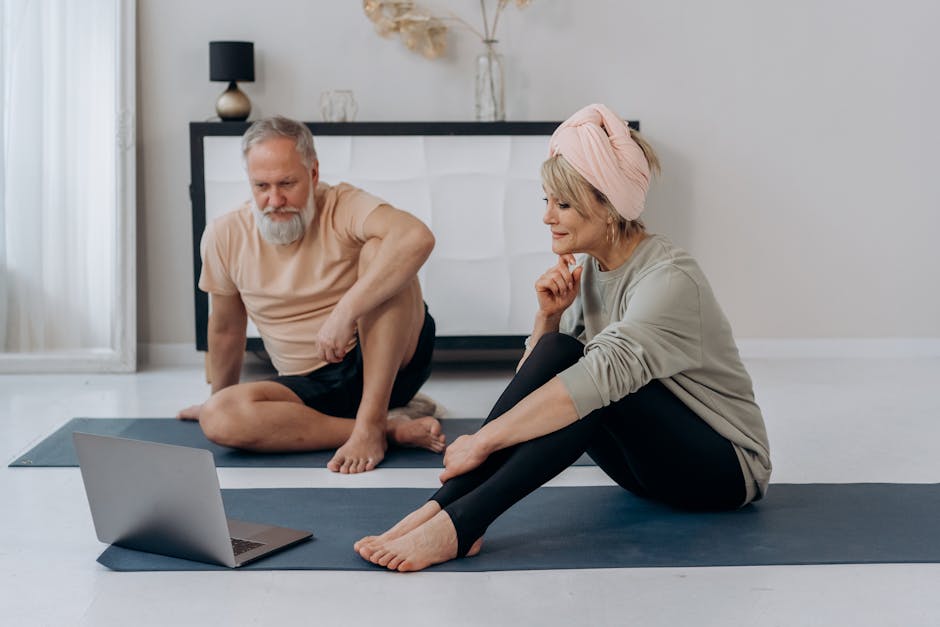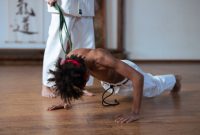
Revitalizing your fitness journey can be an exciting venture, especially for active seniors in Sweden aiming to enhance their health and wellness in 2025. With a focus on sustainable home workout routines, this guide will provide you with effective strategies that cater to the needs and aspirations of seniors. Emphasizing safety, accessibility, and enjoyment, these exercises will help you maintain agility, strength, and vitality right from the comfort of your home.
The Importance of Staying Active in Senior Years
As we age, staying physically active becomes increasingly important for maintaining independence, enhancing quality of life, and preventing age-related conditions. For seniors in Sweden, a country known for its strong emphasis on health and wellness, embracing a regular workout routine can significantly contribute to both physical and mental well-being. A home workout routine tailored for seniors not only provides convenience but also ensures a safe environment where you can engage in exercises at your own pace.
Setting Up Your Home Workout Space
Creating a dedicated space for exercise at home can enhance your motivation and consistency. Here are a few tips to consider when setting up your workout area:
- Choose a Spacious Area: Ensure you have enough room to move freely without obstacles.
- Invest in Basic Equipment: Consider acquiring a yoga mat, resistance bands, and light weights. These tools can be beneficial for a variety of exercises.
- Maintain a Comfortable Temperature: A well-ventilated area can make your workout more enjoyable.
- Good Lighting: Ensure the space is well-lit to prevent any accidents.
Effective Home Workout Routine for Seniors
Below is a comprehensive routine designed specifically for active seniors, focusing on flexibility, balance, strength, and cardiovascular health. Always remember to consult with a healthcare professional before starting any new exercise regimen.
Warm-Up Session (10 Minutes)
- Neck Rotations: Gently rotate your neck in a circular motion to relieve tension and improve flexibility.
- Shoulder Rolls: Roll your shoulders forward and backward to loosen up shoulder joints.
- Marching in Place: Start with a gentle march on the spot to gradually increase your heart rate.
Flexibility and Balance Exercises (15 Minutes)
- Standing Leg Raises: Hold onto a chair for balance and slowly lift one leg to the side. Alternate sides.
- Heel-to-Toe Walk: Walk in a straight line, placing the heel of one foot directly in front of the toes of the other foot.
- Seated Forward Bend: Sit on the edge of a chair, stretch your legs forward, and reach for your toes.
Strengthening Exercises (20 Minutes)
- Wall Push-Ups: Stand a few steps away from a wall and push your body away using your arms, keeping your body straight.
- Chair Squats: Stand in front of a chair and lower yourself into a squat position, ensuring your knees don’t go past your toes.
- Bicep Curls: Using light weights or resistance bands, curl your arms up to strengthen the biceps.
Cardiovascular Component (15 Minutes)
- Step Touches: Step side to side, tapping your toes and swinging your arms in the opposite direction.
- Arm Circles: Extend your arms to the sides and draw small circles in the air, gradually increasing their size.
- Low-Impact Aerobics: Engage in low-impact movements such as marching or gentle dance steps to keep the heart rate up.
Cool Down and Stretch (10 Minutes)
- Deep Breathing: Sit or stand comfortably, take deep breaths in and out to slow down your heart rate.
- Calf Stretch: With one foot in front of the other, bend the front knee while keeping the back leg straight.
- Side Stretches: Reach one arm over your head and bend to the opposite side to stretch the torso.
Nutritional Tips for Active Seniors
Nutrition plays a vital role in supporting your fitness routine. Here are some guidelines to help you maintain a balanced diet:
- Stay Hydrated: Ensure you drink enough water throughout the day, especially before and after workouts.
- Incorporate Protein: Include lean meats, fish, eggs, or plant-based proteins to support muscle health.
- Consume Whole Grains: Opt for whole grains like oats, brown rice, and quinoa for sustained energy.
- Fruits and Vegetables: Aim to include a variety of colorful fruits and vegetables in your meals for essential vitamins and minerals.
Maintaining Motivation for Home Workouts
Staying motivated can sometimes be challenging, especially when working out alone. Here are some strategies to keep your spirit high:
- Set Realistic Goals: Establish achievable fitness goals to maintain a sense of accomplishment.
- Track Progress: Keep a record of your workouts to visually see your improvements over time.
- Incorporate Music or Podcasts: Listen to your favorite tunes or podcasts to make workouts enjoyable.
- Stay Connected: Join online fitness communities or virtual workout sessions to engage with others.
FAQ
How often should seniors engage in home workouts?
Active seniors should aim for at least 150 minutes of moderate-intensity exercise per week, as recommended by health organizations. This can be divided into daily sessions that include strength training, flexibility exercises, and cardiovascular activities.
What precautions should seniors take before starting a new workout routine?
It is crucial for seniors to consult with a healthcare professional to assess their fitness level and any underlying health conditions before starting a new workout routine. Additionally, ensuring a safe workout environment by removing hazards and using proper equipment is essential.
Can home workouts be as effective as gym workouts for seniors?
Yes, home workouts can be equally effective as gym workouts if done consistently and correctly. By following a structured routine that targets all major muscle groups and focusing on balance, flexibility, and cardiovascular health, seniors can achieve significant fitness gains from the comfort of their home.
Are there any specific exercises seniors should avoid?
Seniors should avoid high-impact exercises, heavy weight lifting, or activities that require sudden changes in direction or speed. Exercises should be modified to match individual fitness levels and capabilities to prevent injury. Consulting a fitness professional can help tailor exercises to suit specific needs.
How can seniors ensure they are performing exercises correctly?
Utilizing online resources such as instructional videos, hiring a virtual fitness coach, or joining online classes can provide guidance on proper exercise techniques. Paying attention to body signals and avoiding any movements that cause pain or discomfort is crucial for safe practice.
Conclusion
Embracing a home workout routine tailored for active seniors is a rewarding journey towards improved health and well-being. By focusing on exercises that enhance flexibility, balance, strength, and cardiovascular endurance, seniors in Sweden can enjoy an active lifestyle that supports their physical and mental health. Remember to combine these workouts with a balanced diet and stay motivated by setting realistic goals. As you commit to these practices, you’ll find yourself revitalized, energized, and ready to embrace the joys of senior living in 2025.


